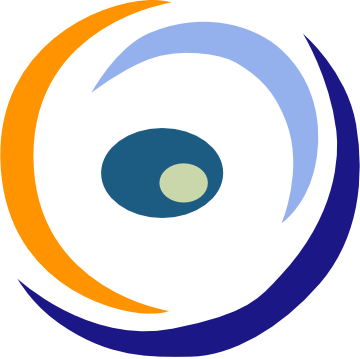The accurate measurement of refraction plays a crucial role in the fitting of prescription eyewear. It directly impacts the comfort, effectiveness, and satisfaction of individuals who rely on corrective lenses. This article explores the significance of precise refraction measurement and its influence on prescription eyewear fitting.
Key Takeaways
- Accurate refraction measurement is essential for ensuring the comfort and effectiveness of prescription eyewear.
- Challenges in refraction measurement can lead to inaccurate prescriptions and discomfort for the wearer.
- Precision in refraction measurement is crucial for achieving optimal visual clarity and reducing eye strain.
- Factors such as lens selection and fitting considerations are directly affected by accurate refraction measurement.
- Advancements in refraction technology are shaping the future of precise refraction measurement in prescription eyewear fitting.
The Impact of Accurate Refraction Measurement
Understanding Refraction Measurement
Refraction measurement is a fundamental process in determining the correct prescription for eyeglasses or contact lenses. It involves assessing how light waves are bent or ‘refracted’ as they pass through the eye’s lens, which is critical for identifying vision issues such as myopia, hyperopia, or astigmatism.
Accurate refraction measurement is essential for creating eyewear that corrects vision effectively. Without precise measurements, lenses may not provide the necessary correction, leading to blurred vision and discomfort.
The goal of refraction measurement is not only to correct poor vision but also to provide optimal visual comfort and performance.
- Steps in Refraction Measurement:
- Patient history and preliminary eye health check
- Determination of visual acuity
- Objective refraction using instruments like autorefractors
- Subjective refraction to fine-tune the prescription
Each step is crucial in ensuring that the final prescription will deliver the best possible visual outcome for the patient.
Challenges in Refraction Measurement
Accurate refraction measurement is a complex process that can be influenced by various factors. Patient cooperation and communication are crucial, as the subjective nature of some tests requires clear feedback from the patient. Environmental conditions, such as lighting and room setup, also play a significant role in ensuring precise measurements.
- Patient’s ability to understand and respond to instructions
- Variability in examiner’s technique and experience
- Instrument calibration and maintenance
The precision of refraction measurement is not solely dependent on the technology used; the human element is equally significant. The interaction between the patient and the practitioner can greatly affect the outcome.
Another challenge is the inherent variability in the human eye, which can fluctuate due to factors like fatigue or medication. This variability can lead to discrepancies in measurements taken at different times or under different conditions. Ensuring consistency across multiple examinations is essential for the reliability of prescription eyewear.
Importance of Precision in Refraction Measurement
The precision of refraction measurement is paramount in the creation of prescription eyewear. Accurate measurements ensure that lenses correct vision effectively, reducing the risk of eye strain, headaches, and other discomforts associated with poorly fitted glasses.
Precision in refraction measurement is not just about getting the right prescription; it’s about tailoring the visual solution to the individual needs of each patient. Factors such as pupillary distance, lens curvature, and astigmatism must be measured with exactness to provide optimal visual clarity.
Precision in refraction directly translates to the quality of life for the wearer. It is the cornerstone of effective vision correction and cannot be compromised.
The following list highlights the key outcomes of precise refraction measurement:
- Enhanced visual acuity
- Improved overall comfort
- Decreased likelihood of vision-related symptoms
- Greater satisfaction with the final eyewear product
Factors Affecting Prescription Eyewear Fitting
Role of Refraction in Fitting
The process of fitting prescription eyewear is critically dependent on the accuracy of refraction measurement. Accurate refraction determines the correct power of the lenses needed to correct a patient’s vision. Without precise measurements, eyewear may not only fail to correct vision adequately but can also cause discomfort, headaches, or further vision problems.
- Lens Power: Dictated by the degree of refractive error.
- Axis: Essential for correcting astigmatism.
- Pupillary Distance (PD): Ensures that lenses align properly with the center of the pupils.
The interplay between refraction accuracy and lens fitting is a delicate balance that optometrists must achieve to ensure optimal vision correction and wearer comfort.
It is not just about the prescription strength; the refraction measurement informs decisions on lens type, coatings, and even the frame selection. For instance, higher prescriptions might require thinner, high-index lenses to avoid the ‘coke bottle’ effect. Ultimately, the goal is to provide eyewear that fits seamlessly into the wearer’s lifestyle, offering clear vision and comfort.
Considerations for Lens Selection
When selecting lenses for prescription eyewear, several key factors must be taken into account to ensure optimal vision and comfort. The material of the lens is a primary consideration, as it affects both the weight and the thickness of the glasses. For instance, polycarbonate lenses are lightweight and impact-resistant, making them ideal for children and active adults.
Another crucial factor is the lens coating. Options include anti-reflective, scratch-resistant, and UV-blocking coatings, each serving a distinct purpose to enhance the wearer’s visual experience. The choice of coating can significantly affect the longevity and functionality of the eyewear.
- Lens design (single vision, bifocal, progressive)
- Index of refraction (determines lens thickness)
- Lens treatments (tints, photochromic)
The precise alignment of the lens within the frame is essential to ensure that the optical center matches the wearer’s pupillary distance, providing clear and comfortable vision.
Impact of Accurate Refraction on Comfort
The comfort of prescription eyewear is directly influenced by the precision of refraction measurement. Accurate refraction ensures that lenses correct vision without causing strain or discomfort. When the refraction is off, even by a small degree, it can lead to issues such as headaches, eye fatigue, and blurred vision, which significantly detract from the wearer’s comfort.
- Proper alignment of lenses
- Correct level of vision correction
- Minimized visual distortions
Ensuring that the refraction measurement is precise allows for a tailored fit that not only improves vision but also enhances the overall comfort and wearability of the eyeglasses. This is crucial for individuals who rely on their glasses for daily activities and extended wear.
The relationship between refraction accuracy and comfort is not just about the immediate fit. It also affects the long-term health of the eyes. Consistently wearing improperly fitted glasses can lead to chronic discomfort and may even exacerbate underlying vision problems.
Technology and Innovation in Refraction Measurement
Advancements in Refraction Technology
The field of refraction measurement has seen significant technological advancements in recent years. Automated refractors have revolutionized the way optometrists measure the refractive error of the eye, providing faster and more accurate results than traditional methods.
Key innovations include:
- Wavefront aberrometry, which maps the eye’s errors in detail.
- Adaptive optics, allowing for real-time correction of the eye’s aberrations during the exam.
- Portable refraction devices that bring eye care to remote areas.
These technologies not only enhance the accuracy of prescriptions but also improve patient experience by making the refraction process more comfortable and convenient.
The integration of digital systems has also enabled the storage and analysis of large amounts of refractive data, paving the way for personalized eye care solutions. As we continue to embrace these advancements, the precision and reliability of refraction measurements are expected to reach new heights, further improving the quality of prescription eyewear fitting.
Future Trends in Refraction Measurement
As we look to the future, the field of refraction measurement is poised for transformative changes. The integration of artificial intelligence (AI) and machine learning (ML) is expected to revolutionize the accuracy and efficiency of refraction tests. These technologies can analyze vast amounts of data to refine algorithms, leading to more precise prescriptions.
Another promising development is the advent of portable and smartphone-based refraction devices. These innovations aim to increase accessibility, allowing for remote refraction assessments that could benefit underserved populations.
The emphasis on patient-centered care is driving the demand for personalized refraction experiences. Tailored approaches that consider individual visual behavior and preferences will likely become more prevalent.
The table below outlines potential advancements and their implications:
Embracing these trends will require ongoing education for eye care professionals, ensuring they remain adept at utilizing the latest technologies to deliver the best possible care.
Conclusion
In conclusion, the accurate measurement of refraction plays a crucial role in the fitting of prescription eyewear. It ensures that individuals receive the correct prescription, leading to improved vision and overall eye health. The importance of precise refraction measurement cannot be overstated, as it directly impacts the quality of life for those who rely on prescription eyewear. Therefore, optometrists and eyecare professionals must prioritize the precision and accuracy of refraction measurements to provide optimal vision care for their patients.
Frequently Asked Questions
Why is accurate refraction measurement important in prescription eyewear fitting?
Accurate refraction measurement ensures that the prescription eyewear provides the correct vision correction for the individual, leading to improved visual clarity and comfort.
What are the challenges in refraction measurement?
Challenges in refraction measurement may include factors such as patient cooperation, environmental conditions, and the precision of measurement instruments.
How does refraction measurement impact the selection of lenses?
Refraction measurement directly influences the choice of lenses to ensure the prescribed correction is accurately incorporated into the eyewear.
What role does technology play in advancing refraction measurement?
Technological advancements have led to more precise and efficient refraction measurement methods, enhancing the accuracy of prescription eyewear fittings.
What are the future trends in refraction measurement?
Future trends may involve the integration of artificial intelligence and advanced imaging techniques to further improve the accuracy and speed of refraction measurement.
How does accurate refraction measurement contribute to the overall comfort of prescription eyewear?
Accurate refraction measurement ensures that the prescription eyewear provides the optimal vision correction, leading to reduced eye strain and enhanced comfort during daily activities.

I am a seasoned software engineer with over two decades of experience and a deep-rooted background in the optical industry, thanks to a family business. Driven by a passion for developing impactful software solutions, I pride myself on being a dedicated problem solver who strives to transform challenges into opportunities for innovation.

